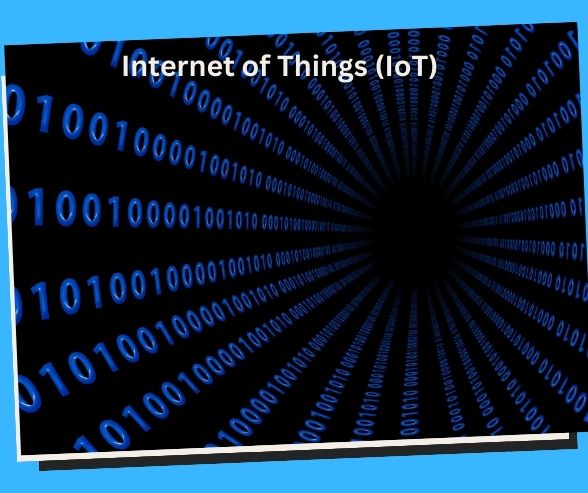
No Coding Required: Developing IoT Applications Made Easy!
Discover the freedom of creating IoT applications without the need for coding expertise. Get started today!
Empowering Non-Coders: A Beginner’s Guide to Developing IoT Applications
In an era where technology drives innovation and connectivity, the Internet of Things (IoT) has emerged as a game-changer, revolutionizing industries and transforming everyday experiences. While the prospect of developing IoT applications may seem daunting for those without coding skills, advancements in low-code and no-code platforms have made it increasingly accessible to non-technical users. In this comprehensive guide, we’ll explore how you can develop IoT applications without coding skills, empowering you to unleash the potential of IoT and bring your ideas to life.
Understanding IoT Application Development: Breaking Down Barriers 🌐
Before diving into IoT application development, it’s essential to understand the basic concepts and components involved. Here’s a brief overview:
- IoT Devices: These are physical objects embedded with sensors, actuators, and connectivity capabilities, allowing them to collect data and interact with the environment.
- Data Collection: IoT devices gather data from the physical world, such as temperature readings, motion detection, or GPS coordinates, and transmit it to a central server or cloud platform.
- Data Processing: The collected data is processed, analyzed, and transformed into actionable insights using algorithms, machine learning models, or rule-based systems.
- User Interface: The user interface (UI) allows users to interact with the IoT application, view data visualizations, set preferences, and control connected devices.
Leveraging Low-Code and No-Code Platforms: Simplifying Development 🛠️
Thanks to the emergence of low-code and no-code platforms, developing IoT applications has become more accessible to non-coders. These platforms provide intuitive interfaces, drag-and-drop tools, and pre-built components that allow users to create applications with minimal coding knowledge. Here are some popular low-code and no-code platforms for IoT application development:
- Microsoft Power Apps: Power Apps offers a suite of tools for building custom business applications, including IoT solutions, without writing a single line of code.
- Google Cloud IoT Core: Google Cloud IoT Core provides a managed service for connecting, managing, and ingesting data from IoT devices, with support for data processing and analytics.
- AWS IoT Core: Amazon Web Services (AWS) IoT Core offers a scalable and secure platform for building IoT applications, with features such as device management, data ingestion, and integration with other AWS services.
- Zoho Creator: Zoho Creator enables users to build custom applications for various use cases, including IoT, using a simple drag-and-drop interface and customizable templates.
- Arduino IoT Cloud: Arduino IoT Cloud is a platform that simplifies the development of IoT projects using Arduino boards, with built-in support for data visualization, remote control, and automation.
Getting Started: Steps to Develop IoT Applications Without Coding Skills 🚀
Now that you’re familiar with the tools and platforms available, let’s walk through the process of developing an IoT application without coding skills:
- Define Your Use Case: Start by identifying the problem you want to solve or the opportunity you want to seize with your IoT application. Consider factors such as target audience, desired outcomes, and available resources.
- Select Your Platform: Choose a low-code or no-code platform that aligns with your needs and preferences, based on factors such as pricing, features, and ease of use.
- Connect Your Devices: Connect your IoT devices to the chosen platform, following the provided documentation and tutorials. This typically involves registering devices, configuring connectivity settings, and establishing communication protocols.
- Design Your Application: Use the platform’s visual tools and templates to design the user interface and define data visualization components, such as charts, graphs, and dashboards.
- Configure Data Processing: Set up data processing rules, workflows, or analytics pipelines to handle incoming data from IoT devices, such as aggregating, filtering, or analyzing sensor readings.
- Customize Logic and Automation: Define logic and automation rules to trigger actions or alerts based on specific conditions or events detected by the IoT devices, such as sending notifications, adjusting settings, or activating actuators.
- Test and Iterate: Test your IoT application in a controlled environment to ensure that it functions as intended and meets user requirements. Gather feedback from stakeholders and iterate on the design and functionality as needed.
- Deploy and Monitor: Once your IoT application is ready, deploy it to production and monitor its performance, reliability, and user engagement over time. Continuously monitor and optimize your application to ensure its effectiveness and scalability.
Best Practices: Tips for Success 🌟
To maximize your success in developing IoT applications without coding skills, consider the following best practices:
- Start Small: Begin with simple projects or prototypes to build your confidence and familiarize yourself with the platform’s capabilities before tackling more complex applications.
- Learn by Doing: Experiment with different features, tools, and techniques offered by the platform to gain hands-on experience and deepen your understanding of IoT application development.
- Collaborate and Learn: Engage with the platform’s community forums, tutorials, and support resources to learn from others, share knowledge, and troubleshoot issues.
- Stay Updated: Keep abreast of the latest trends, updates, and advancements in IoT technology and low-code/no-code platforms to stay ahead of the curve and leverage new opportunities.
- Embrace Iteration: Embrace an iterative approach to development, continuously refining and improving your IoT applications based on user feedback, market trends, and emerging requirements.
Empowering Creativity and Innovation 🚀
Developing IoT applications without coding skills opens up a world of possibilities for individuals and organizations alike, empowering creativity, innovation, and entrepreneurship. With the right tools, platforms, and mindset, anyone can harness the power of IoT to solve real-world problems, drive business value, and make a positive impact on society. Whether you’re a hobbyist, entrepreneur, or corporate innovator, now is the time to embrace the democratization of technology and embark on your journey to develop IoT applications without coding skills.
Creating IoT applications without coding skills is within reach for anyone willing to learn and experiment with the tools and platforms available. By following the steps outlined in this guide and adopting a mindset of curiosity, creativity, and continuous improvement, you can unleash your potential as a creator and innovator in the exciting world of IoT. Start developing your IoT applications today and bring your ideas to life with confidence and ease.
💡 Benefits of Developing IoT Applications Without Coding Skills
- Accessibility: No-code platforms make IoT development accessible to everyone, regardless of coding proficiency.
- Rapid Prototyping: Create prototypes and proof-of-concepts quickly and easily, allowing for faster iteration and experimentation.
- Cost Savings: By eliminating the need for skilled developers, no-code development reduces development costs and time-to-market.
- Empowerment: No-code platforms empower non-technical users to take control of their IoT projects and bring their ideas to life independently.
- Flexibility: Easily customize and modify IoT applications to meet changing requirements and user feedback without extensive coding knowledge.
- Collaboration: No-code platforms facilitate collaboration between cross-functional teams, allowing designers, business analysts, and domain experts to contribute to the development process.
- Innovation: Enable innovation by democratizing IoT development and encouraging experimentation and creativity among users.
- Scalability: Scale IoT applications effortlessly as demand grows, with no-code platforms handling the complexities of infrastructure and deployment automatically.
- User-Centric Design: Focus on user experience and functionality rather than technical implementation details, resulting in more intuitive and user-friendly applications.
- Empowering Small Businesses: No-code development levels the playing field for small businesses and startups, enabling them to compete with larger competitors in the IoT space.
🏆 Case Studies: Real-life Examples of No-code IoT Development Success Stories
- Smart Home Automation: Jane, a homeowner with no coding experience, used a no-code IoT platform and website builder to develop a smart home automation system. She created custom rules and triggers to control lights, thermostats, and security cameras based on her preferences and daily routines, transforming her home into a connected haven.
- Industrial Monitoring: Jake, an operations manager at a manufacturing plant, leveraged a no-code IoT platform to monitor equipment performance and track production metrics in real-time. By customizing dashboards and alerts, he improved operational efficiency and reduced downtime without the need for complex coding.
- Environmental Sensing: Sarah, an environmental scientist, deployed a network of IoT sensors to monitor air quality, temperature, and humidity in urban areas. Using a no-code platform, she configured data collection parameters and visualized sensor data on interactive maps, facilitating research and policy-making initiatives.
- Healthcare Monitoring: Mark, a healthcare provider, developed a remote patient monitoring solution using a no-code IoT platform. He integrated wearable devices and health sensors to track vital signs and symptoms, enabling patients to receive personalized care and interventions without requiring coding expertise.
- Smart Agriculture: Emily, a farmer, implemented precision agriculture techniques using a no-code IoT platform. She deployed soil moisture sensors, weather stations, and irrigation controllers to optimize water usage and crop yield, improving farm productivity and sustainability without coding skills.
- Retail Analytics: Tom, a retail store manager, utilized a no-code IoT platform to gather customer data and analyze shopping behaviors. By tracking foot traffic, dwell times, and purchase patterns, he optimized store layouts and marketing strategies, driving sales and customer satisfaction without coding knowledge.
- Fleet Management: Lisa, a logistics coordinator, developed a fleet management solution using a no-code IoT platform. She integrated GPS trackers and vehicle sensors to monitor route efficiency and driver behavior, reducing fuel costs and maintenance expenses without coding expertise.
- Energy Monitoring: Alex, a facilities manager, implemented an energy monitoring system using a no-code IoT platform. By connecting smart meters and building automation systems, he analyzed energy usage patterns and identified opportunities for conservation and cost savings without coding skills.
- Smart City Solutions: David, a city planner, leveraged a no-code IoT platform to deploy smart city solutions such as traffic management and waste management systems. By aggregating data from sensors and cameras, he optimized urban infrastructure and services without coding expertise.
- Education Technology: Rachel, a teacher, created interactive learning experiences using a no-code IoT platform. She integrated educational robots and sensor kits to teach STEM concepts and coding principles to students, fostering creativity and innovation in the classroom without coding skills.
📝 Key Takeaways: Essential Strategies for Developing IoT Applications Without Coding Skills
- Choose the Right Platform: Select a no-code IoT development platform that aligns with your project requirements and technical proficiency level.
- Start Small: Begin with simple projects and gradually expand your skills and capabilities as you gain confidence and experience.
- Explore Templates and Tutorials: Take advantage of pre-built templates and tutorials provided by the no-code platform to jumpstart your development process and learn new concepts.
- Leverage Integrations: Integrate with third-party services and APIs to extend the functionality of your IoT applications without coding custom solutions.
- Collaborate with Experts: Collaborate with domain experts, designers, and other stakeholders to gather insights and feedback and ensure the success of your IoT projects.
- Experiment and Iterate: Embrace experimentation and iteration as part of the development process, refining your ideas and solutions based on user feedback and real-world usage.
- Stay Updated: Keep abreast of the latest trends and developments in IoT technology and no-code platforms to stay ahead of the curve and continuously improve your skills.
- Seek Community Support: Join online communities, forums, and user groups to connect with other no-code developers, share experiences, and seek advice and support when needed.
- Embrace Continuous Learning: Stay curious and open to learning new tools, techniques, and technologies to expand your no-code development capabilities and stay competitive in the IoT space.
- Believe in Yourself: Have confidence in your abilities and believe that you can create amazing IoT applications without coding skills. With perseverance and determination, anything is possible!
❓ FAQs: Addressing Common Concerns About Developing IoT Applications Without Coding Skills
- Can I develop IoT applications without coding skills?
Yes, with the right no-code development platform, anyone can create IoT applications without writing code, using visual interfaces and drag-and-drop tools. - Do I need technical knowledge to use a no-code IoT platform?
While some technical understanding may be helpful, most no-code platforms are designed to be user-friendly and intuitive, requiring minimal technical expertise to get started. - What types of IoT applications can I build without coding skills?
You can build a wide range of IoT applications, including smart home devices, environmental sensors, industrial monitoring systems, healthcare solutions, and more, using no-code development platforms. - Are no-code IoT platforms suitable for enterprise use?
Yes, many no-code platforms offer enterprise-grade features and scalability, making them suitable for developing mission-critical IoT applications for businesses of all sizes. - How do I ensure the security of my IoT applications built without coding skills?
No-code platforms typically include built-in security features and best practices to protect your applications from common vulnerabilities and threats. Additionally, you can follow security guidelines and implement encryption and access controls as needed. - Can I integrate third-party hardware and services with my IoT applications?
Yes, most no-code platforms support integration with a wide range of hardware devices, sensors, APIs, and cloud services, allowing you to extend the functionality of your applications and leverage existing tools and technologies. - What are the limitations of developing IoT applications without coding skills?
While no-code platforms offer a lot of flexibility and functionality, there may be certain advanced features or customizations that require coding expertise. However, for most use cases, you can achieve your goals without writing code. - How do I troubleshoot issues with my IoT applications built without coding skills?
No-code platforms typically provide troubleshooting tools and support resources to help you diagnose and resolve issues with your applications. You can also seek assistance from the platform’s community or support team if needed. - Can I monetize IoT applications developed without coding skills?
Yes, you can monetize your IoT applications by offering them as products or services to customers, licensing them to other businesses, or incorporating them into larger solutions or platforms. - What are some examples of successful IoT applications developed without coding skills?
Successful examples include smart home automation systems, environmental monitoring solutions, industrial control systems, healthcare monitoring devices, and more, developed by individuals and businesses using no-code platforms.
🚀 Conclusion: Empowering Innovation with No-code IoT Development
Hiring mobile app developers is crucial for turning your innovative ideas into functional, engaging, and successful applications. The best developers bring a combination of technical expertise, creative vision, and practical experience to every project, ensuring your app not only meets but exceeds expectations. Whether you’re looking to build a new app from scratch or enhance an existing one, connecting with skilled mobile app developers is your first step toward success. Start your journey today and watch your vision come to life with the help of top-tier mobile app development talent.
No-code IoT development has democratized innovation, allowing anyone with a vision to create transformative applications without coding skills. By leveraging intuitive tools, templates, and integrations provided by no-code platforms, you can turn your IoT ideas into reality and unlock endless possibilities for creativity and growth. So don’t let your lack of coding experience hold you back—embrace the power of no-code development and embark on a journey of discovery and innovation in the exciting world of IoT!
Key Phrases
- IoT application development without coding
- Creating IoT apps without coding skills
- No-code IoT application development
- Developing IoT applications effortlessly
- Coding-free IoT app development
- Build IoT apps without coding knowledge
- Easy IoT app development for beginners
- Simplified IoT app creation process
- No coding required IoT app building
- Beginner-friendly IoT app development methods
Hashtags
- #NoCodeIoT
- #CodingFreeApps
- #IoTDevelopment
- #NoCodeNeeded
- #EasyAppBuilding
- #TechSimplified
- #InnovativeApps
- #IoTBeginner
- #NoCodingSkills
- #CodingFreeFuture
Save/Share this story with QR CODE
Disclaimer
This article is for informational purposes only and does not constitute endorsement of any specific technologies or methodologies and financial advice or endorsement of any specific products or services.
📩 Need to get in touch?
📩 Feel free to Contact NextGenDay.com for comments, suggestions, reviews, or anything else.
We appreciate your reading. 😊Simple Ways To Say Thanks & Support Us:
1.) ❤️GIVE A TIP. Send a small donation thru Paypal😊❤️
Your DONATION will be used to fund and maintain NEXTGENDAY.com
Subscribers in the Philippines can make donations to mobile number 0917 906 3081, thru GCash.
3.) 🛒 BUY or SIGN UP to our AFFILIATE PARTNERS.
4.) 👍 Give this news article a THUMBS UP, and Leave a Comment (at Least Five Words).
AFFILIATE PARTNERS

World Class Nutritional Supplements - Buy Highest Quality Products, Purest Most Healthy Ingredients, Direct to your Door! Up to 90% OFF.
Join LiveGood Today - A company created to satisfy the world's most demanding leaders and entrepreneurs, with the best compensation plan today.



 Business Technology, Finance Technology & Information Technology
Business Technology, Finance Technology & Information Technology





